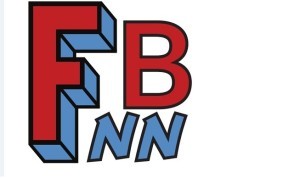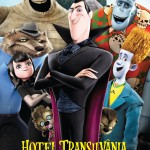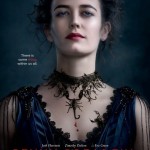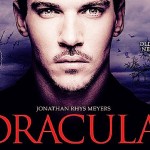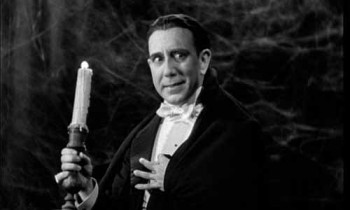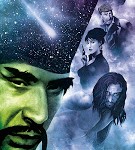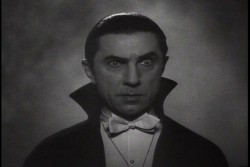
Bela Lugosi as Dracula
After nearly a year, I am getting back to my review of Universal Horror classics. So let’s take a look at the 1931 Universal production of Dracula.
Before I get into the review I want to cover an interesting topic.
In the early days of talking pictures, it was common for a version of a Hollywood production to have a second version of a film made using the same script and sets, but in another language. Apparently overdubbing was not that refined a process and many considered it cheating anyway.
Dracula had a Spanish version that was filmed at night using the same script and sets. Most of these foreign versions have been lost, but Dracula is one of the few they were able to recover.
I have watched both. While this review is going to just cover the English language version, next time I will go over the Spanish version, as it deserves its own article.
On to the review.
For years Universal had wanted to make Dracula. Specifically Carl Laemmle Jr., son of Universal founder Carl Laemmle Sr., wanted to make Dracula. Originally as a silent picture with Lon Chaney as the Count. Several factors delayed production. First was just securing the rights, as author Bram Stoker’s widow had sued the producers of Nosferatu for not having secured the rights, and won. Then there was Chaney himself who developed throat cancer and died. Finally, you had the great depression which resulted in the movie having a smaller budget. Originally Laemmle had envisioned a grand film on the scale of the Hunchback of Notre Dame that adhered very closely to Stoker’s novel. Now he needed to tone it down and eventually the film more closely adhered to the Broadway stage version.
The other challenge was casting. Most of the cast came together fairly quickly, except for Dracula himself. At first, Conrad Veidt was considered. He had been successful in horror, both as the somnambulist Cesare in The Cabinet of Dr Caligari, and lead in The Man who Laughed. Unfortuantely Veidt had to return to Europe, so he was out.
Interestingly, the studio was against casting Bela Lugosi, who had played the part to much acclaim on Broadway. Lugosi himself lobbied hard for the part and with choices dwindling the studio decided to give him a shot.
The director of the film was Tod Browning. Browning was a successful silent film director, including having worked on the vampire-themed London After Midnight with Lon Chaney.
The story begins in Transylvania with a real estate agent named Renfield traveling to meet with Count Dracula to finalize his purchase of Carfax Abby in London. After securing the deal, Renfield is put under Dracula’s thrall. Traveling to London, Renfield is institutionalized at the Sanitarium next to the Abby run by Dr. Seward. The count begins preying on London, with focus on Seward’s daughter Mina. Seward brings in Dr. Van Helsing to look into a rash of anemic deaths which Van Helsing correct deduces are the result of vampire attacks. Van Helsing suspects the Count, and once confirmed, begins a hunt for the vampire’s resting place in order to bring an end to the menace.
Let’s take a look at what does not work.
Pacing is the number one problem with the film. You can clearly tell this is an adaptation of a play, as that is how it is paced. One striking thing is that the Count almost never moves quickly, preferring to stalk towards his victims.
I suspect that Browning added to this as he was used to silent film and did not know how to adapt the pacing for the inclusion of sound. One reason this is glaring is the lack of background music. This was not the fault of the production, however. In the first few years of sound, the only time music was added was if there were musicians visible. It was assumed that music would confuse the audience as to where it was coming from.
Another oddity is some of the editing choices. There are several times when Dracula is onscreen that it will cut to a close up of his face with a band of light across his eyes. This is an iconic image and I would think perhaps creepy to a 1931 audience, but seems jarring by today’s standards.
On the cast, sadly many of them just don’t stand out. Several of the cast did not have long careers in Hollywood, and you can see why here.
However, moving on to more positive aspects, there were some exceptional performances; otherwise I doubt this movie would have become a classic.
It almost should go without saying that Bela Lugosi dominates the film. He brings, charm, mystery, and menace to the role.
Next to Lugosi is Dwight Frye as Renfield. He starts the movie as a normal, if dull businessman, but as soon as he is under Dracula’s control he is a raving madman. Frye makes him stand out as a man who wants to be free, but cannot escape Dracula’s grasp.
Edward Van Sloan as Van Helsing rounds out the good performances as Van Helsing, conveying the man’s will and determination to defeat the vampire.
Of interest is that later in 1931 both Frye and Van Sloan would be part of the cast of Frankenstein, securing their place in horror history.
Another bright spot for Dracula was cinematography. The film was lucky to have gotten ground breaking cinematographer Karl Freund. Thanks to his work, the film looks wonderful even today, and many of his tracking shots were considered ground breaking at the time.
Finally we have to look at the legacy of this movie. It solidified the image of the vampire in the public mind. Even today, the stereotype of the vampire is based on Lugosi’s performance. It also gave us the image of the haunted castle, with crumbling walls and cobwebs. The tropes associated with a vampire’s minion were set in stone by Frye, just like he would later in the year with the mad scientist’s hunchbacked assistant. And the vampire hunter in the mold of Van Helsing would also be influenced by this film.
It is also worth noting that Dracula was the first film made in Hollywood that was overtly supernatural. Until then all Hollywood horror involved the deformed, the deranged, or someone using trickery. Europe had some supernatural elements in their films, but this was the first for Hollywood, and opened the doors for all horror that would follow.
In the end you can see why this made such an impact.
However, I do not feel that it has held up as well as Frankenstein.
I give the 1931 Dracula a grade of C+.
Join us next week when we see how well the Spanish language version holds up.

